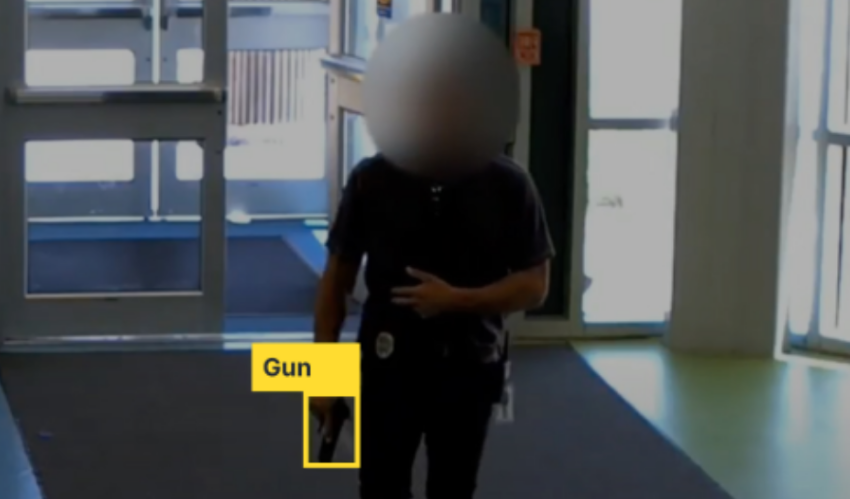AI for Safety and Security: Low-code Solutions and Future Implications
Interplay and School Safety.mp4
Every day, we face the threat of mass shootings. As of August 2022, there have been 442 mass shootings in the US. This harrowing statistic has been on many Americans’ minds, especially in the context of safety in public venues (e.g. schools, religious spaces, movie theaters.) At Iterate.ai, we care deeply about providing solutions that aid in reducing and ultimately eliminating this threat from our world. We want our technology to help protect everyone’s lives.
We have developed a threat awareness system that leverages AI-based image recognition to identify guns, knives, and robbery masks. Our award-winning, low-code AI environment, Interplay®, connects to existing systems (e.g. existing security cameras) to then use image recognition capabilities to identify a threat. Once a threat has been recognized, automated responses (e.g. notify police, lock doors, sound an alarm) can be activated to provide safety for those who are threatened. Interplay® has several APIs available that connect seamlessly with various security platforms, and can also communicate directly via text or voice to telephones, enhancing safety and security features. NOTE: If you are an education official or want to know more about this program, Please contact us here.
Threat Awareness
AI has been leveraged to support the safety and security of the public for many years. We’ve seen AI support emergency dispatchers’ assessment of callers’ cardiac arrest symptoms, protect the general public from cybersecurity attacks, and even deploy voice recognition for secure password authentication. The uses for AI in public safety and security are diverse and necessary to continue to protect people from the dangers of today.
We also have related use cases that offer solutions for safety and security concerns. We can deploy Interplay® with existing camera platforms to count and track how many people enter a public space. People counting offers security solutions for retailers, for example, because our system learns from previous data collected. If the number of people entering a store seems completely off from the recorded data from previous days, weeks, months, etc. then an alert can be triggered to notify security staff. We also leverage our technology to detect weapons and mask-wearing among individuals. We have trained our AI to precisely differentiate between a real gun and a fake gun, and between someone wearing a ski mask, someone wearing a medical mask, and someone who is maskless. This provides an additional layer of safety and security for various public settings.
As a company, it is our sincere desire to make our technology as widely available as possible. We want to contribute to the safety and security of our public and are actively seeking partnerships to improve the safety of our schools, churches, hospitals, and other public spaces.
Future implications
The future of public safety and security is intertwined with AI. Specifically, automation will provide opportunities for safety to be ingrained into society seamlessly. The concept of smart cities is continuing to pick up steam, and examples of surveillance and predictive policing are inching closer to becoming our everyday reality. Smart technologies can reduce crime by 30 to 40 percent, and reduce response times for emergency services by 20 to 35 percent. Tools such as biometrics, facial recognition, and drone surveillance are already here, and as machine learning (ML) algorithms become more intelligent, that data can be used to increase safety and security for the general public.
Part of safety and security also includes ensuring that any AI being deployed has been trained through a bias-free lens. We know that AI is not inherently biased, and that unfortunately, sometimes the human who builds the AI unintentionally encodes bias into the algorithm. In order to ensure safety for all, we need to be creating technology that will not cause any harm towards an individual due to identities that they may hold (e.g. race, gender, etc.) and that the technology is geared towards providing preventive safety and security.
NOTE: If you are an education official or want to know more about this program, Please contact us here.

